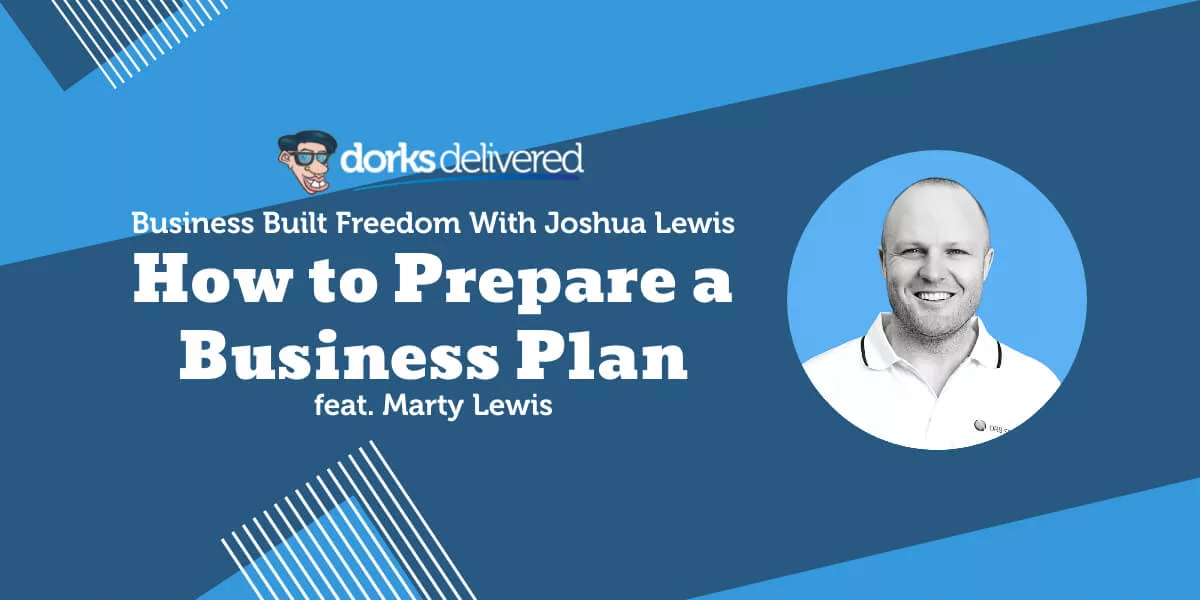The business world can be unpredictable, but having a well-thought-out business plan can be the difference between success and failure. Marty Lewis is a training director that helps people bridge the gap between great skills and a great business. Marty details eight steps to follow when it’s time to prepare a business plan. What Marty says is a must-read or listen for any prospective business owners, or anyone interested in starting a business.
How to Prepare a Business Plan
1. Start With Finances
It’s crucial to have a solid financial foundation before moving forward with your business endeavors. More than 90% of the people who run a small business will have less than 20 staff for the course of the life of that business. By calculating your living expenses, you will get a realistic sense of what you need to survive. There’s no right or wrong answer, but it’s the time frame that you need. How long could you survive if you don’t make a dollar?
That’s the number one thing that a lot of people get stuck with during the starting phase.
I would say you want 6 months of runway if you’re going from a zero-revenue position. I’ve seen people do it with less. I’ve seen people who need more. It really does come down to you as an individual.
2. Plan to Thrive, Not to Just Survive
Let’s say you need $6,000 a month to live. Generally, double or triple that figure and that will be your comfort point. At $12,000 to $18,000, you’re probably pretty comfortable. This comes down to one of the really important pieces around business planning: what is it that you’re trying to achieve?
If you’re someone who wants to make $20,000 a year as a side hustle, there are so many different business plans out there. You just have to know what’s good for you.Do you have the capacity on your own with the price point that you think you’re going to go at?
Say you’re going to charge yourself $120 an hour or $100 an hour. That means you’re going to bill, not work. Your price point is 6. Say it’s 100. You’ve got to do 60 hours a month at $100 an hour. Do you have 60 hours a month worth of work lined up? The next step on the back of that is the balance between capacity and revenue. Say your thriving point is $12,000. Can you physically work and bill 120 hours a month? You may be able to, or you may not be able to.
You can start to stage it out at that point. Business is a constant balance of ‘okay, with the resources that I have now and the price point that I charge, I have a capacity for this.’
It’s very specific to what you’re trying to do. But generally speaking, if a business is starting out, they’re going to try and make somewhere between $250 and $2,000 a month. That’s a very common target.
Improve business efficiency to thrive. Find out how through a free discovery session.
3. Keep It Simple
People get tired of fantasising about what their business will be, which I call the penthouse. They fantasise about that ‘big, hairy, audacious goal.’ This would be the business.
You’re fantasising about the penthouse, but you can only build the penthouse when you’ve got the other 45 levels done. Instead of spending time working out what decorations you’re going to put in the penthouse, work out how you are going to pull the foundation. Work out how you get from the foundation to level 1, from level 1 to level 2, and so on. Whilst it’s good to have that big, hairy, audacious goal or that grand plan for your business, your business plan must guide you to put your time into what’s most productive for you now. Keep it simple!
4. Focus on What’s Near
To give it a timeframe, have an idea for as far ahead as you can see, and that’ll change depending on the time frame and your situation. I’ve had times in my business where once I get to the next financial year, I’ll reassess. Other times I think can see this in 10 years being this nice penthouse.
Think about your business as far away as you can and then bring it back. What are the things that you can do in the next 3 months, 6 months, 12 months? If you want to come a little bit smaller than that, what are the things that you can do in the next month.
What are the things that you can do now that are going to take you towards that penthouse? If you’re on level 0, then build level 1. When you’ve built level 1, you can build level 2. When you’ve built level 2, you can build level 3 and so on.
You’ve got to put 98% of your effort into level 0 to 1. Otherwise, 2 and 3 and 4 and 5 and the penthouse is never going to happen.
You use that penthouse as a great guide for you to shape where you’re going, but bring it back to 3, 6, 12 months and what’s going to make the impact for you right now.
Expect the unexpected to minimise risks. Book a free discovery session to learn more.
5. Celebrate Your Progress
Instead of looking straight to the goal, look at the footings. You’ve got to be able to celebrate the progress along the way, which is moving you towards that end goal, not just the end goal. Upon the looks of it, whatever the time is that I say something’s going to take and then mentally times it by two, that’s probably how long it’s going to take. So you know need to celebrate the progress you make and not feel too hard on yourself.
6. The Plan Needs to Adapt
An example in my life is that I’ve just upgraded and rolled out a fairly substantial SharePoint set up, an infrastructure for myself as an operating system. I wouldn’t call what I do
I haven’t done a project like that that I haven’t underestimated by 50. You’ve got to have some element in there for you to be able to adapt when things haven’t gone well. Plan for the best, and expect the worst. You’ve got to be able to work with this stuff that you have.
Find out how you can achieve higher productivity.
7. Volume v. Efficiency
A common problem is that you can get bogged in is refining your product. That won’t matter for you nearly as much in the early days as getting more volume. You can refine the efficiency of how you do something once you have volume.
There isn’t a software suite in the world that is going to serve absolutely everything that you need to do. So, whether it’s your CRM, your marketing software, it doesn’t matter. Work with what you’ve got, especially in the early days.
You can’t afford in the early days to spend so much time refining your product. You’ve got to know that you add value to somebody. The point for you to really refine is somewhere between your above break-even and double break-even/triple break-even. At that stage, you’ve got to get uncomfortable.
Relationships take time to build. Two customers become four. Four customers become eight customers. Eight customers become 16. It’s hard work, but you’ve got to be doing that work at the start. Use what you have and accept that it’s going to take some time to drive through that.
Optimise your systems and processes. Find out how through a free discovery session.
8. Everyone’s Not the Right Fit
Personally, I am a horrendous salesperson, but you ought to remember that you’re not trying to sell something to somebody. If you’re starting your own business, you’re not selling something.
As a consultant, I am fully aware that I’m not a great fit with hundreds of people. I still to this day pick up the phone, introduce myself to people. I do that with much less emotional baggage than I did in the first 3, 6, 12 months of my business.
What changed my opinion on that was the moment that I realised I’m not picking up the phone and acting like that guy who showed up at the door and trying to sell them something. It’s not my job to determine whether you see value in what I have. It’s my job to put it out there. If you see it and if it fits right but if you say no, we don’t have to spend any more time together. I’m just looking for the person who does. That was how I was able to reframe it. That really made a massive difference for me on my sales side in business.
Have Marty Help You
I’m always happy to have a conversation with somebody who’s trying to add some value. If you want to grab a coffee or frothy, head to the Performance Edge page, drop me a line. I’m happy to grab a phone call or grab a beer or coffee.
Business Planning Basics by Martin Lewis
https://www.youtube.com/watch?v=FDc7LdDng0I
[module-379]

































